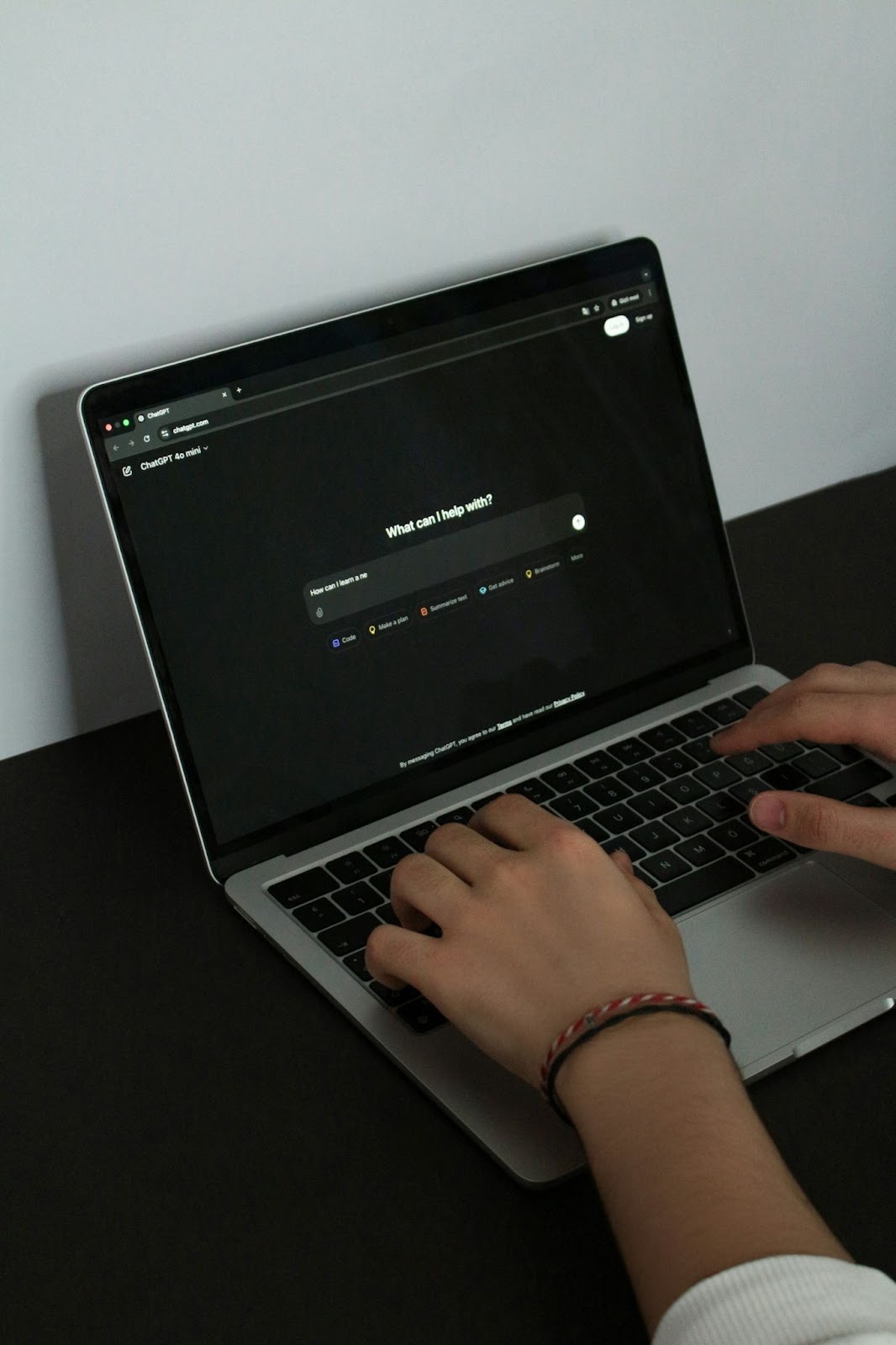Have you ever asked ChatGPT for something and received a response completely different from what you expected? Although millions of people use AI tools daily, most don’t get even half of what these powerful assistants can offer. Why? Because they haven’t learned to master prompting,the essential skill that unlocks the full potential of AI.
A few years ago, getting good results from AI required technical expertise and programming knowledge. Today, the difference between mediocre and amazing responses comes down to something much simpler: how you formulate the question.
It’s not about complex programming, but about learning a new type of conversation. Let’s set aside technical jargon and go straight to what matters: practical techniques that will transform your interactions with AI starting today.
Why is prompting so important?
Think of AI as an incredibly intelligent but extremely literal exchange student. They understand your language perfectly but miss cultural context and subtle cues. When you ask for something vague like “Tell me about cars”, they have to guess what you really want: are you looking for history, buying advice, or mechanical information?
The secret is simple: AI doesn’t read minds, but it follows instructions with remarkable precision. The more specific your request, the better your results will be.
The three pillars of effective prompts
Every great prompt contains these essential elements:
1. Clear intention: Tell AI exactly what you want
Before: “Write about climate change.”
After: “Create a 500-word explanation of how climate change affects agriculture in Latin America, focusing on corn and soybean production.”
The difference? The second prompt eliminates guesswork by specifying:
- The exact topic (effects of climate change on Latin American agriculture)
- The length (500 words)
- The specific focus (corn and soybean crops)
2. Context: Provide AI with the background it needs
Before: “Help me write an email.”
After: “Help me write a professional email to decline a job offer from Company X because I’ve accepted another position. I want to maintain a good relationship with them for future opportunities.”
By providing context, you’re giving AI critical information it needs:
- Who the email is for (Company X)
- Why you’re writing (declining an offer)
- The tone you want (professional, relationship-preserving)
3. Format: Specify how you want the information presented
Before: “Give me information about healthy eating.”
After: “Create a weekly meal plan for a vegetarian trying to increase protein intake. Format it as a Monday-through-Sunday table with breakfast, lunch, and dinner for each day, including the protein content of each meal.”
Clear format instructions ensure you receive information in the most useful way for your needs.
If you’re just starting out with artificial intelligence, check out our guide on how to start using AI in your daily life.
Five master prompting techniques that changed the game

1. Role assignment: Give AI a character to play
The simplest way to get specialized knowledge is to assign a specific role or expertise to the AI. Begin your prompt with “Act as a [profession/expert]” to frame the AI’s perspective.
Example: “Act as an experienced automotive engineer. My 5-year-old car makes a strange noise when braking and vibrates slightly, but otherwise runs normally. What observations should I monitor, and when should I consider taking it to a mechanic?”
2. Prompt chaining: Build complex results through conversation
Instead of creating one massive prompt, break complex tasks into a series of smaller, connected prompts. Start with a broad request, then refine through follow-up prompts.
Example:
- “List five potential topics for a presentation on renewable energy for high school students.”
- “For topic #3 on your list, outline the five main points I should cover.”
- “For the second main point, provide three real-world examples I could discuss.”
3. Learning by example: Teach by example
Show AI exactly what you want by providing examples of the desired output format.
How it works: Provide one or more examples of the exact format you want before making your specific request.
Example: “I need to write product descriptions for kitchen appliances. Here’s the format I want:
Example: ‘The Kitchen Pro 7000 blender brings restaurant-quality smoothies to your countertop. With 1000W of power and six precision settings, it transforms even the toughest ingredients into silky perfection. Dishwasher-safe parts make cleanup a breeze.’
Now, write a similar description for the Espresso Master X3 coffee machine.”
4. Chain-of-thought prompting: Guide AI’s reasoning process
For complex problems, instruct the AI to work through its reasoning step by step.
How it works: Add phrases like “Think step by step” or “Let’s work through this systematically” to your prompt.
Example: “I need to divide 45 students into project groups of 4, with any remaining students distributed among existing groups. Think step by step to determine how many complete groups I can form and how many students will be distributed.”
5. Refinement prompting: Iterative improvement
Ask AI to improve its own output based on specific criteria.
How it works: Generate initial content, then ask for targeted improvements.
Example:
- “Write a brief email announcing our company’s new remote work policy.”
- “Now revise that email to sound more enthusiastic and highlight the benefits for employees.”
- “Make it 30% shorter while keeping all key information.”
Check out our AI Productivity Kit with 15 essential tools for 2025 that will complement your prompting skills.
Common mistakes that sabotage your results

Being too vague
Problem: “Tell me about marketing.”
Solution: “Explain the key differences between content marketing and paid advertising for a small e-commerce business selling handmade jewelry, including the typical costs and ROI of each approach.”
Overloading with too many requirements
Problem: “Write me a complete business plan for a restaurant including market analysis, financial projections for 5 years, menu design, staffing plan, marketing strategy, and competitive analysis in Mexico City.”
Solution: Break this into separate prompts, starting with “Outline the key sections needed in a business plan for a new restaurant in Mexico City” and then address each section individually.
Forgetting to specify audience and purpose
Problem: “Write an article about cryptocurrency.”
Solution: “Write an educational article about cryptocurrency basics for readers over 60 who have never invested in digital assets but are concerned about missing out. Use simplified explanations and avoid technical jargon.”
Real-world applications to master prompting
Writing and communication
Basic prompt: “Help me write a cover letter.”
Advanced prompt: “Help me write a cover letter for a digital marketing position at a tech startup. I have 3 years of experience in content creation and social media management at a retail company, and I’m excited about transitioning to the tech industry. Include my experience with increasing social engagement by 45% and managing successful email campaigns. The tone should be professional but show enthusiasm and creativity.”
Research and learning
Basic prompt: “Tell me about quantum computing.”
Advanced prompt: “I’m a high school science teacher preparing a 15-minute introduction to quantum computing for my physics students. Explain 3-4 fundamental concepts of quantum computing in simple terms with real-world analogies. Include 1-2 current applications that would interest teenagers, and suggest a simple classroom demonstration that illustrates one of these concepts.”
Problem solving
Basic prompt: “How do I improve my website’s SEO?”
Advanced prompt: “I run a small photography business website built on WordPress that’s getting low traffic. Act as an SEO specialist and provide a prioritized checklist of 5 specific actions I should take to improve my search rankings. For each action, explain why it matters and give me a specific example of how to implement it. Assume I have basic technical skills but no SEO experience.”
AI’s limitations: What no prompt can fix
Even perfect prompting can’t overcome certain AI limitations:
- Hallucinations: AI sometimes generates incorrect information that sounds true, but isn’t. Always verify facts from reliable sources.
- Knowledge cutoffs: Most AI models have a knowledge cutoff date. They don’t know about events after these dates.
- Creative originality: While AI can generate impressive creative content, it’s ultimately recombining and remixing existing patterns, not creating truly original concepts.
- Ethical judgment: AI lacks real-world moral understanding and should never be the final authority on ethical decisions.
Putting it all together: Your master prompting starter kit

Ready to transform your AI interactions? Try these ready-to-use prompt templates:
For better writing help:
“Act as a [professional role]. Write a [document type] about [specific topic]. The audience is [description of readers]. The tone should be [descriptive adjectives]. Include sections on [list main points]. Keep it approximately [length] words. Format it with [headings/bullet points/etc.].”
For problem solving:
“I need help solving a problem with [brief description]. The specific situation is [detailed context]. I’ve already tried [what you’ve attempted]. My goal is [desired outcome]. Please think through this step by step and suggest 3-5 potential solutions.”
For learning new concepts:
“Explain [concept] as if I’m a [beginner/expert level] with background in [relevant field]. Focus particularly on how [specific aspect] works. Include real-world examples that demonstrate [key principles]. If possible, compare this to [related concept] to highlight the differences.”
The bottom line: It’s not magic, it’s method
Effective prompting isn’t about finding secret codes or hacks—it’s about clear communication. The more precisely you can express what you want, why you want it, and how you want it presented, the better results you’ll get.
Start implementing these techniques today, and you’ll immediately notice the difference in quality, relevance, and usefulness of your AI interactions. The AI revolution is here—and mastering prompting is your key to harnessing its full potential.
What will you create with your new prompting skills?
